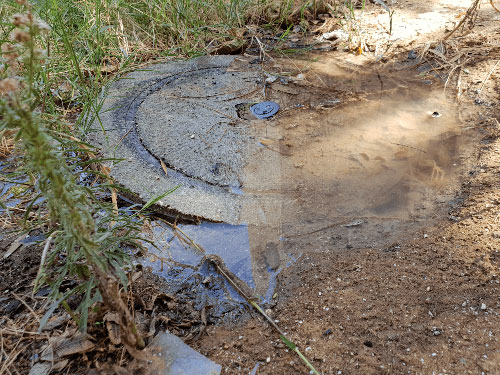First things first: KNOW WHERE YOUR TANK IS!
External Care
- Don’t drive over the system or compact the soil with heavy equipment
- Don’t dig around it or build anything on top of it
- Don’t cover the septic system with concrete
- Divert roof drainage & downspouts away from it
- Do not plant deep-rooted vegetation near the system, their roots may penetrate into it
- Never plant a vegetable garden over the lateral field. Microbes from the effluent may travel through the soil & contaminate the crop
Internal Care
- Keep your drains clean. If it is not biodegradable, it does not belong in your system.
- No sanitary napkins, disposable diapers, cigarettes, cat litter, condoms, any packaging or cotton swabs.
- No cooking oils. This can harden in the tank, build up and thus cause a blockage
- No toxic chemicals, i.e., paints, pesticides, solvents or poisons. These can contaminate your ground water as well as kill required bacteria
- Use low phosphorus laundry detergent. Liquid detergent is better than powders
Indications that there is a problem
Warning signs range from subtle to insufferable. The grass over the system may become unusually green or spongy to walk on. Toilets, showers, and sinks might take longer to drain. Occasional sewage odors may become noticeable, often after a rainfall. Sometimes homeowners discover gray or black liquids surfacing in the yard or backing up from fixtures in the home. Whatever the problem may be, fix it fast!
What to do when there is a problem
Report any problems to your Township, before proceeding with repairs. Once the building department approval has been obtained, call a licensed contractor. Detail the full extent of the problem, giving specific details as to when you first noticed any symptoms.
Repairs can range from clearing a few lines to replacing entire drain fields and landfilling contaminated soil. Costs vary from a few hundred dollars to thousands.
The extent and cost of required repairs depend on how far you let the problem go.
Summer and early fall are the best times to pump out your septic system. This leaves time before winter, for the tank to refill and for bacterial action to become re-established. Also, the ground won’t be frozen, and the spring water table, which can create buoyancy problems for septic tanks, has receded. Particular care should be taken when pumping tanks made of lightweight materials such as polyethylene, fiberglass and steel.
When your tank is being pumped, it is a good time to inspect the baffles. These are important because they keep solids under control and out of the lateral lines
Never enter a septic tank. Toxic gases in the tank can cause death or injury. Never smoke or use an open flame near septic tank openings. Combustible gases such as methane may be present. Treat all contact with septic system components as if they were a biological hazard. Wash thoroughly with a water-bleach mixture after each contact.

